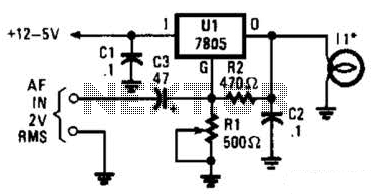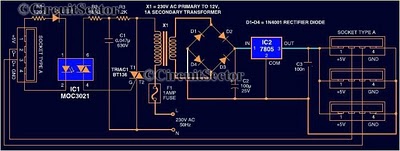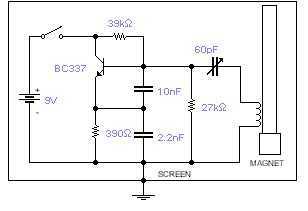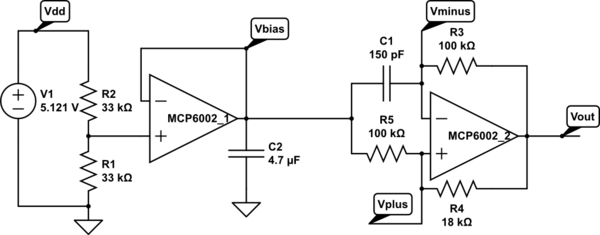
Visible-Light Audio Transmitter Circuit

In the visible-light transmitter, a 7805 voltage regulator is configured in a variable-voltage setup, with an audio signal input to modulate the output voltage. The modulated output voltage is utilized to transmit information through an incandescent lamp.
The visible-light transmitter circuit employs a 7805 voltage regulator, which is typically used to provide a stable output voltage of 5V. In this application, it is configured to operate in a variable-voltage mode. This configuration allows the output voltage to be modulated based on the input audio signal. The audio signal, which contains the information intended for transmission, is fed into the common input of the voltage regulator.
As the audio signal varies, it causes corresponding fluctuations in the output voltage of the 7805 regulator. These modulated voltage changes are then used to drive an incandescent lamp. The lamp acts as the transmission medium, emitting light that varies in intensity in accordance with the modulated voltage. This variation in light intensity encodes the audio information, allowing it to be transmitted over a distance.
This method of communication exploits the properties of visible light, making it suitable for applications where radio frequency transmission may be undesirable or impractical. The incandescent lamp's response to the modulated voltage ensures that the transmitted light is directly representative of the input audio signal, enabling effective communication through visible light. In the visible-light transmitter, a 7805 voltage regulator is connected in a variable-voltage configuration, and an audio signal is fed to the common input, to modulate the output voltage. The modulated output voltage is used to transmit intelligence via an incandescent lamp.
The visible-light transmitter circuit employs a 7805 voltage regulator, which is typically used to provide a stable output voltage of 5V. In this application, it is configured to operate in a variable-voltage mode. This configuration allows the output voltage to be modulated based on the input audio signal. The audio signal, which contains the information intended for transmission, is fed into the common input of the voltage regulator.
As the audio signal varies, it causes corresponding fluctuations in the output voltage of the 7805 regulator. These modulated voltage changes are then used to drive an incandescent lamp. The lamp acts as the transmission medium, emitting light that varies in intensity in accordance with the modulated voltage. This variation in light intensity encodes the audio information, allowing it to be transmitted over a distance.
This method of communication exploits the properties of visible light, making it suitable for applications where radio frequency transmission may be undesirable or impractical. The incandescent lamp's response to the modulated voltage ensures that the transmitted light is directly representative of the input audio signal, enabling effective communication through visible light. In the visible-light transmitter, a 7805 voltage regulator is connected in a variable-voltage configuration, and an audio signal is fed to the common input, to modulate the output voltage. The modulated output voltage is used to transmit intelligence via an incandescent lamp.





